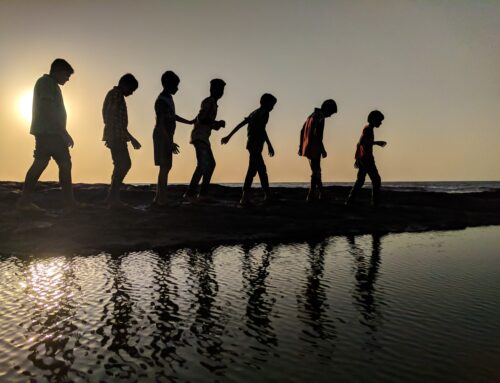In a mini-research I have recently conducted among managers working and leading multicultural teams, I was surprised to learn that almost none of them benefited from cultural training while transitioning in a new role requiring interactions with people of various cultural backgrounds.
At best, they might have received some guidelines mostly in connection to the company culture or policies or had somebody in the team assisting with the set up in a new country (visa, medicals, accommodation, the school for kids, etc.). Aside from this, they were left alone to find their way and deliver results in their new role.
The majority of them used their common sense, intuition, and observations to learn how things are done in the new environment, understand the meetings and people dynamics and relationships. This process took time, effort, and sometimes reflected on both their individual and team performance.
Running this research, I remembered my own experience while transitioning to the same company in a similar role, in a different country. It was almost copy-paste with the stories my respondents shared. I supposed I was a bit lucky, though, as my new assignment came immediately after my MBA and all the cultural training I received during my studies. The experience I gained there interacting with people from various cultures was very fresh and present. And this gave me confidence… The role I got was similar to what I have done in my country: dealing with the same products, operating systems, policies, and procedures. You could say I was able to be up and running from day one. Well… this was far from reality….
For more than six months, I had the impression I was in a completely different company. I was relating more efficiently with clients, service providers, and external partners than with my team. The full company culture was “flavored” with a local touch. And when this is a mix of cultures that are rarely blending, the challenge is tremendous. Almost one year after starting this assignment, one of our senior managers I used to work in my home country moved to our organization. After a month, he graciously approached me and asked me how I feel working here. I looked at him, smiled, and told him I feel like I am in another company ….,” Exactly!” was his answer. ..I knew where he was coming from, and I tried to share some “tips” on how things are done here. Not sure if this helped him, but it helped me a lot to know that other people feel the same.
I have read quite a few HR reports which raised concerns about the high attrition rate among professionals transferred to a different country. Most of them usually mention as a cause of the attrition opportunities existing in the new markets. Very few looks at the employees’ experience in the new organization/team. Given my experience and the stories I heard from people around me, I am inclined to believe that this attrition rate is significantly impacted by the local culture influence in the company culture that nobody prepares you for. And these hits you hard… most of the time, you do not understand what or why happens.
The truth is that building cultural intelligence needs time and is a transformational process in which we need external support to make it smooth. I like how C. Early and E. Mosakowski defined cultural intelligence as residing in head, body, and heart – and the three need to work together to accomplish the desired results. Transformation and positive results happen when we are ready to open not only our minds but also our hearts and adapt our body language, expressions, attitudes, and speech style when we interact with people from other cultures, and start exploring their cultures, being curious and genuinely interested in their values and beliefs or asking questions instead of making assumptions
Another critical aspect of developing your cultural intelligence is the commitment to practice cultural humility. Despite the general misconception, cultural humility is not about yourself. Cultural humility is about the esteem you offer to other people. It is the ability to maintain an open stance to others about aspects of their cultural identity that are most important.
To reach this point is especially important to practice continuous self-reflection examining your cultural profile, biases, and stereotypes and knowing your limitations. It is also about openness to learn more about other cultures, perspectives, beliefs, and continuous growth and development over time (M.Tervalon and J.Murray-Garcia).
Some strategies to build cultural humility:
- Explore your own and others’ cultural identity and how these interact.
- Ask questions when uncertain instead of making assumptions
- Express curiosity and interest in others’ beliefs, values, and worldview
- Commit yourself to continuous growth
An excellent way to start with might be understanding your cultural profile. Prof. Phillipe Rosinski developed an impressive online assessment which is free and can be accessed here: https://www.cofassessment.com/. I found it extremely useful and insightful. When I compared my cultural profile with my CliftonStrengths® results (Gallup’s assessments uncovering people’s talents), it was the beginning of an exciting self-discovery journey…..
What about you? What is your experience in multicultural environments? I would love to hear from you and learn from each other.
If you are interested in exploring more, you may book a free discovery session using the button below or email me at contact@mihaelanica.com.
If you want to learn more about Cultural Diversity, try and do this by playing. And make the learning FUN! You may play alone or with your team, friends of family and learn: https://multiplayerteamtraining.com/product-category/business-authors-category/mihaela-nica/.
Visit: https://multiplayerteamtraining.com, a platform by https://www.pixelhunters.com







Leave A Comment